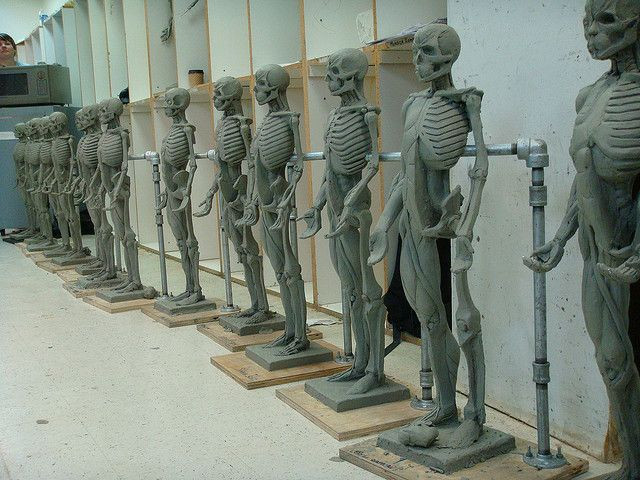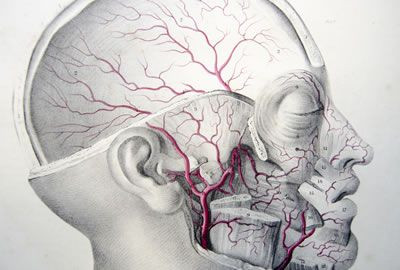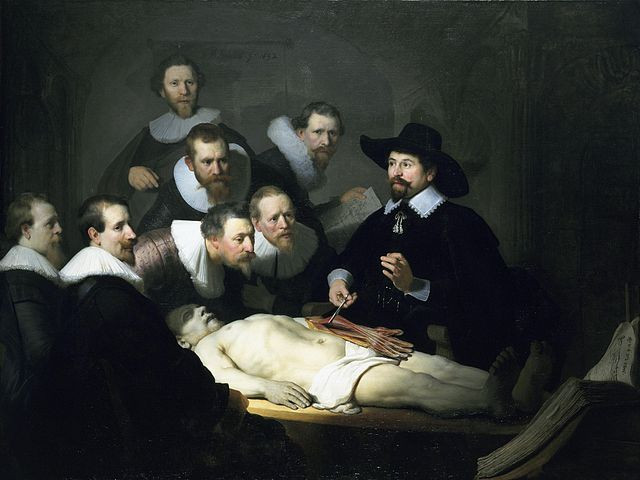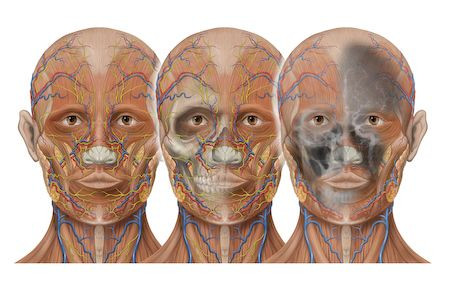The Greatest Gift: This Is What Happens When You Donate Your Body To Science

You've heard the phrase, probably while you were half-watching some science show on PBS, but truth is you don't really know what it means to "donate your body to science." You suspect your cadaver would be used in an anatomy class at some med school somewhere, but the fact is your most intimate "donation" could just as easily end up in a science experiment or be used by a surgeon test-driving a new medical technology. Unfortunately, it's the one thing no one sees coming — once you've offered your body to science, you have no say in where it goes. Another thing you possibly do not know is you need to meet some unexpected criteria for your gift to be accepted.
So let’s begin. There’s more than one way to skin a cat, and, as this strangely appropriate proverb would suggest, there’s more than one way to donate your body to science. All of those ways, though, undoubtedly will start with a difficult conversation, and this is true whether you contact your nearest university or place a call to a professional society, such as the International Institute for the Advancement of Medicine or the American Association of Tissue Banks (AATB). During the initial discussion, you will note that some people still refer to “cadavers,” but many professionals now encourage using the more sensitive term “deceased donor.”
“My infant son was a donor for research, and I think of him as a contributor to research and a hero, not a ‘cadaver,’” said Sarah Gray, director of marketing and public affairs at AATB.
If you intend your body be used in a med school anatomy class, it’s probably wisest to get in touch with a university (though they may not guarantee your remains will be used in that way). If you speak with someone at a professional society, they can recommend one of the 10 national organizations that supply the needs of researchers and other science professionals around the world. In particular, an AATB-accredited non-transplant anatomical donation organization would abide by the highest industry standards and a code of ethics.

No matter where you turn, you will be expected to answer a series of health-related questions to see if you qualify and, unfortunately, many people don’t make it past this point.
“Everybody who calls up who wants to be a donor. We’re probably taking only 30 percent of those,” said Michael Pierre, lab manager at BioGift Anatomical, a whole body donation company located in Portland, Ore.
At BioGift, this early screening involves 22 medical/social questions that must be answered before the next set of questions, appearing on the pre-registration papers, arrive in the mail; other organizations follow a similar process. All these many questions will assemble a rough medical portrait and also screen out those who have communicable diseases, with special emphasis placed on hepatitis B, hepatitis C, HIV, and syphilis. Usually, they will weed out anyone who weighs more than the limit. (Yes, even in death, you can be fat-shamed.)
If you pass this hurdle and qualify for pre-registration, you will receive authorization forms and instructions explaining the donation process and cards to be distributed to loved ones and health care providers. Sometimes, though, the process does not involve the donor. A next of kin can register on a donor’s behalf, depending on the circumstance, either before or after death. For instance, if you have Alzheimer’s, your nearest loved ones may act in your interest even before you die, though more commonly family members register their loved ones only after death.
“We currently have 18,000 people pre-registered for our program,” said Kana Neibert, managing supervisor at Anatomy Gifts Registry, a non-profit scientific organization based in Hanover, Md. According to Neibert, her organization has an average intake of about 70 bodies each month with more than half of those cadavers being “folks that signed up on their own.”

So now you are preregistered, and in good time you hear the inevitable heavenly call and so your soul returns home. What happens next?
After your death is confirmed and reported, your family or a caregiver (or a hospice representative) will contact your donor organization and, once again, all the questions on the medical/social screening survey must be answered. This is necessary to gain a precise picture of your medical health at the moment of death. Sadly, even those who passed a rigorous early screening may be turned away now for any number of possible reasons.
“The coroner has jurisdiction over us, and if they need to do an autopsy, they do, and that person is no longer a donor,” Pierre explained. While this is a rare scenario, other more likely reasons why a donation could be rejected include some previously undisclosed communicable disease, traumatic injury to tissues (resulting from, say, a car crash), a weight gain, or some other medical issue.
However, if the cadaver is accepted, the donation process whirls into motion. A lab technician will draw blood to test for hepatitis B, hepatitis C, syphilis, and HIV, even as arrangements for transporting the body are being made. In almost all cases, the body will arrive at the facility before the test results do and the organization sets to work.
“We are making arrangements for maintaining proper storage and proceeding with the donation,” said Melinda Ellsworth, vice president of Donor Services, at Science Care, possibly the largest company in the industry, headquartered in Phoenix, Ariz. “We’re getting a more in depth medical history, looking at the body, and at the same time we’re working with a network of clients.” Sometimes, all hopes are dashed when a test for infectious diseases comes back positive.
“If the test is positive, we notify the family,” Neibert explained, and Pierre said he does the same: “We suggest in some cases they go to the doctor to be tested,” he said. Only a small percentage of donations test positive, Neibert says, and Pierre figures it’s about one out of every 30. In any event, a donated body will not be returned even if it is rejected for reasons of infection. “We keep our word and cremate the remains and return them to the family,” Pierre said. In the majority of cases, though, the donation proceeds as planned.

As the link between cadavers and scientists, the donation organizations are busy making arrangements to fulfill the wishes of their clients. Ellsworth says Science Care can accommodate most any need whether that means shipping ready-to-use tissue directly to a biomedical researcher halfway around the world or setting up an education event at a University facility, where 150 orthopedic surgeons will learn how to use a new robotic technology for hip replacement operations. No matter. As soon as a donated body is received, specialists are looking at it to identify what they can procure “from a tissue perspective” to meet client needs. Their goal is simple: to maximize the number of projects each donor body supplies.
“In general, Science Care is able to place, on average, a donation with five medical research training programs,” Ellsworth said.
After the maximum amount of tissue has been recovered and placed with medical institutions, the remainder is sent to a crematorium, or, in the case of Anatomy Gifts Registry, cremated at their special in-house facility. Within six weeks, the ashes will be ready to be picked up or mailed to the family. One final task must be completed, though. A letter of gratitude is mailed to the family “letting them know the research and education their gift benefitted,” Neibert said.
So who donates their bodies to science?
"Lots of veterans — one in three of our donors are vets," said Ellsworth, who happened to check the demographics (including professions) before speaking with Medical Daily. "And homemaker is at the top of the list. But it’s also teachers, truck drivers, managers…,” her voice trailed off. “Everybody has a specific story, either their loved one was suffering from a particular illness or they want to help other people live longer and healthier lives. It’s just in their nature to do everything they can.”
Pierre finds many of the people contacting his organization are “in the medical field.” This would make perfect sense, according to Dr. Justine Schober, director of Academic research for University of Pittsburgh Medical Center. After all, only scientists and health care professionals know how to go about a donation, since, in her words, "the mechanism to donate your body is not understood by most people, the forms are not freely available, and you have to go online and figure out where the registries are and what to do." Schober looks forward to the day when the body donation process becomes more developed — easy, just like donating an organ, which you can sign up for whenever you renew your driver's license.
In the meantime, no matter how confusing the process may be, there appears to be a sharp increase in the number of donors of late.

“On an annual basis, we’re looking at doubling what we had the year before,” Neibert said. Pierre sees a similar trend and suggests the sharp increase is like the surge that occurred in 1986 after the Catholic Church “said it was OK to cremate.” Once that happened, he explained, “cremation spiked. In most states and regions, cremation is more popular than burial today. And now body donation is moving just like cremation.” Though everybody assumes it’s about economics — after all, by donating your body to science you will be helping your loved ones avoid funeral costs — Pierre is quick to say he believes exactly the opposite is true.
“When you’re dealing with death, you’re dealing with emotions, and when you can turn negative emotions into something positive, a lot of people appreciate that,” he said. “People get consoled knowing Mom’s body is going to be useful to future generations after she’s gone.”



























